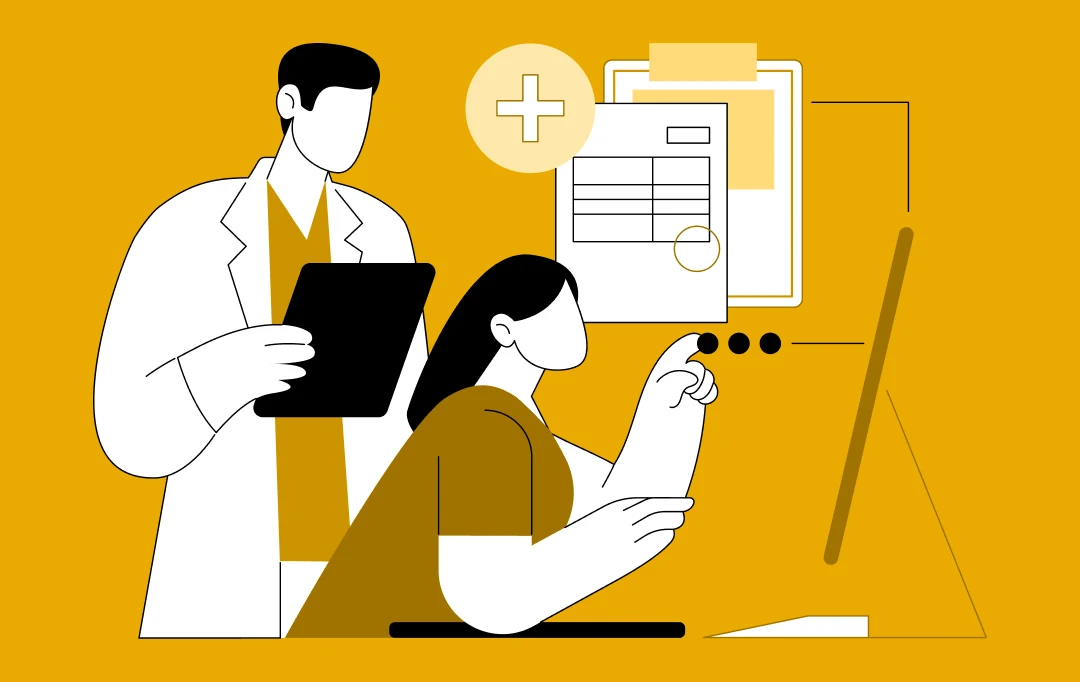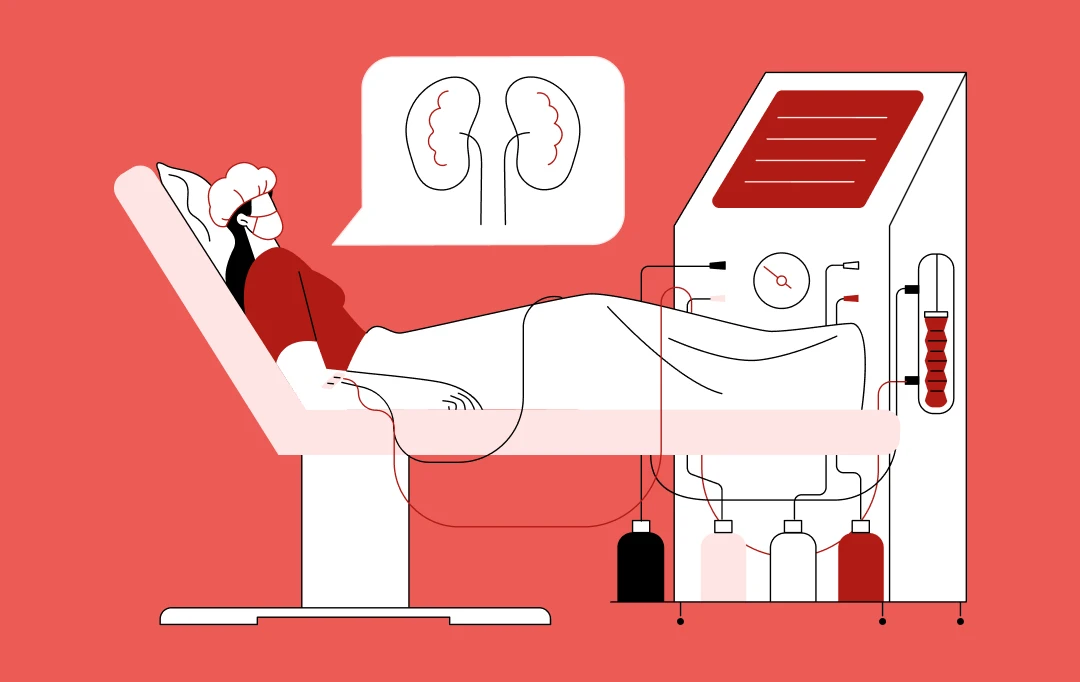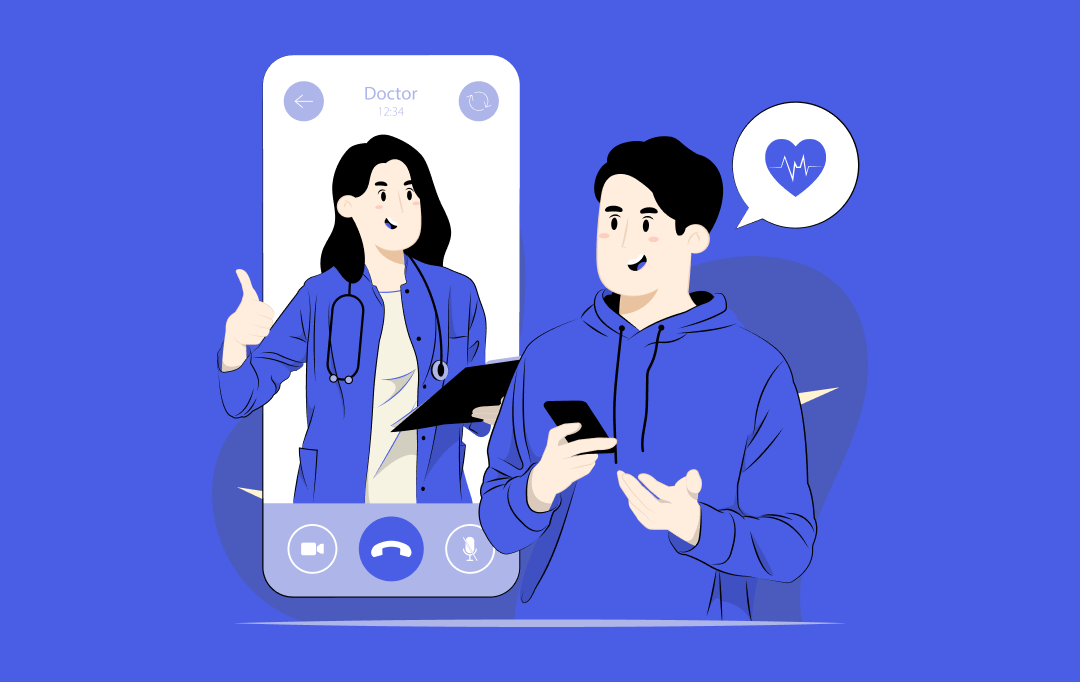- What Are Coronavirus Contact Tracing Apps?
- App-based contact tracing
- What Does Record-Keeping Looks Like
- How Contact Tracing Apps Help People Know They When There is Lack of Testing Kits?
- Features That Make Up For an Efficient COVID-19 Tracing App
- Users side of the application
- City admin web panel
- Admin web panel
- Technology Used For Contact Tracing
- 1. Beacon technology
- 2. Artificial Intelligence
- 3. Blockchain
- 4. Bluetooth and APIs
- FAQs About Contact Tracing Mobile Apps Development for COVID-19
- Parting Words
At the time of updating this article, the coronavirus cases have risen to 219 million marks with the death toll continuously rising on an everyday basis.
Among the uncertainties around its origin in Wuhan, the other, more fearful fact about Coronavirus is that it is extremely difficult to identify who has caught the virus. There is little to zero surety that someone has Corona for at least 14 to 20 days. And by this time, the carrier would have spread it to several other people, who in turn would spread it to hundreds other.
The only solution according to the millions of research papers that have been published since December 2019 is to break the chain. Now, although many governments are looking at measures like lockdown and social distancing, the actual effectiveness that can be drawn by tracing contacts made by the carrier.
Let’s have a look at the stats regarding the usage of the contact tracing app android and iOS.
According to a survey of U.S. adults by Statista, only 7% of respondents aged 65+ were using a contact tracing Android and iOS app on their mobile phone to trace the spread of COVID-19. Additionally, 20% of respondents between 35 to 44 years of age reported that they were also using contact tracing apps for iPhone and android on their phones to trace the spread of COVID-19.
According to a report by the market watch, the global Contact Tracing App market growth is anticipated to rise at a considerable rate during the forecast period, between 2021 and 2026.
In this article, we are going to look into how technology, powered by Bluetooth for contact tracing, can be used to beat this pandemic. We are going to deep dive into the contact tracing app android for COVID-19.
But before we get to the part where we look into the technicalities of contact tracing application development and the ways to make the application, let us first look into what a coronavirus tracing application is and what is the need of having one?
What Are Coronavirus Contact Tracing Apps?
In its simplest form, the COVID19 contact tracing apps, communicates with users (people who installed the same app) via Bluetooth and stores their data locally (Device ID, other Device ID, and Timing).
When someone tests positive for COVID-19 and is marked in the system, the system allows the government to trace all the users to whom this carrier has made contact by time stamps. A record of their geographical movements are shared with the healthcare officials. Additionally, other phone owners who came close to the infected person’s phone get notification of their infection risk and are then advised to self-isolate.
This is only one of the types of contact tracing Android and iOS smartphone apps that the tech domain is presently looking into. The use cases are multiple and can be expanded across several other pandemics or mass-scale risks.
The intent and benefits to develop contact tracing apps for iPhone and Android, however, in all of them is the exact same – to notify people of areas and individuals which are most likely to be affected by the virus. And in this way, play a part in breaking the chain of coronavirus spreading. This is the number one reason why organizations from across the globe are looking for a contact tracing android app to slow coronavirus.
App-based contact tracing
Smartphone-based COVID19 contact tracing app android and iOS have 2 types: Centralized Approach and Decentralized Approach.
Once the individual is diagnosed with COVID 19, the approach for centralized system is different than that of a decentralized system. In a centralized system, the data is stored on a central server, while in the decentralized system the app retains the list of contacts on the phone itself.
What Does Record-Keeping Looks Like

The image above depicts how we network. It is practically impossible to gauge whom we have come into contact with. The contact tracing mobile apps for COVID-19, simply by being in your pocket, can track the users in your proximity and notify you in case you are around someone with a high-risk profile. Additionally, it can help in backtracing the user who might be in the highest risk profile and identify if they need immediate help.

How Contact Tracing Apps Help People Know They When There is Lack of Testing Kits?
How Contact Tracing Works? The application develops a risk score for every user. One that is derived using parameters such as:
A. Self-Assessment:
COVID19 contact tracing app generally makes use of AI to offer a quick assessment test, based on the symptoms that have been recorded by coronavirus patients across the globe. On the basis of the test, the algorithms identify users’ risk levels.
B. Background Assessment:
Through the help of AI and geo-fencing, the system traces users behavior, especially on the front of if users are:
- Participating in isolation or not
- Maintaining social distancing
- Have been quarantined in their home for 14 days
- The transport mode they are using
- The COVID-19 prone area they visited
- Are they frequent travelers?
- How many coronavirus risk-prone people they have been in contact with?.
Features That Make Up For an Efficient COVID-19 Tracing App
The feature set of well-strategized solutions like contact tracing should majorly answer three separate stakeholders. The stakeholders around whom the entire process of developing a digital contact tracing app android and iOS revolves.
Users side of the application
1. Profile
The users must enter their personal information in the profile, which includes their basic details like name, age, etc. along with their home and work addresses.
2. Vehicle Management
In this section, users put in their vehicle information – the make, model, registration number, and year of purchase, etc.
3. COVID Assessment and Self marking
Under this part, users will be given a questionnaire assessment, where users will have to answer questions that would help recognize the risk score – one of the biggest benefits to develop contact tracing apps. The questions, aligning with the coronavirus symptoms is generally around body temperature, symptoms experienced, etc.
4. Background Assessment
The most important function of the contact tracing android smartphone app is that they are designed to run in the background. The metrics here are mainly on the front of assessing self-isolation, social distancing, mode of transport, and the average contact established.
- Contact tracing – the app will keep tracing the users and make a trip diary for the users. To achieve this, the app makes use of a bluetooth for converting the device into a beacon.
- The app tracks if the users made any contact with someone who is at high coronavirus risk.
- The app also tracks the users to check if they are maintaining the social distances.
- The application can also track the travel history of the users and the stops they made – if the location falls under the geofence targeted by the admin, the profile will get notified, automatically.
5. Contact Tracing
The app makes use of bluetooth for converting the device into beacons and toggles between broadcaster and receiver to start logging the contact locally. The app also takes in the bluetooth permission to toggle the device in a beacon broadcaster and receiver in the threshold timing. The receiver who gets the data stores it locally along with information related to Device ID, Timing, and other Device IDs.
Ultimately, it is the beacon technology that plays an important role in the development of digital contact tracing android and iOS apps to combat spread of COVID-19.
6. Trip Diary
Since the app keeps the log of all the information, it creates a trip diary for the users to highlight the areas they have visited.
7. Route Planner
The users will be able to create their own route planner by entering into their start location, stops, and the end location, in addition to details like the mode of transport. The routes eventually would help all the app users know the high-prone areas – a piece of information coming in from genuine sources.
8. Multilingual Ability
Localization is not just one of the most powerful marketing tools but also one that proves to be extremely helpful when it comes to making a pandemic fighting application useful.
9. Privacy
Data protection and privacy are important issues not only for the users but also the developers. Some apps have raised privacy concerns, because if people are to be identified and tracked they require user data to store on central servers. To this, many research teams have developed privacy-minded protocols for security and safe data handling.
City admin web panel
1. User Management
The city admin will have the information around users’ risk score, route planner, trip history, COVID-19 assessment, the ability to search for a user, etc.
2. Transport Option Management
Through the option, the city admin will be able to view all the available transport options, and manage the route management – define the route by the start and end locations, the schedules, stoppage details, closed routes, and COVID-19 prone routes.
3. Gero-fencing Management
The admin is able to view and create a safe area or COVID-19 prone area with the help of geo-fencing. The system also allows them to receive alerts for new areas that need immediate attention.
Admin web panel
1. Dashboard
Through the dashboard, the admin can able to view the stats around users count, city admin count, the COVID-19 prone areas, etc.
2. Users Management
Like the city admin, the app admin will also have the ability to view users details, the COVID-19 assessments, trip diaries, etc.
3. City Admin Management
The app gives them the feature to view the city admins on the platform, along with the ability to view their details.
When we compare coronavirus to all the other pandemics that have happened before, the one clear advantage that we have, amidst the uncertainties, is the presence of disruptive technologies to make the solution more real-time, scalable, and efficient. Technologies that a sound contact tracing medical mobile app development uses to deliver a real-time, scalable solution.
Technology Used For Contact Tracing
In the present time, we see three technologies carrying the most effect on curbing the rise of coronavirus. Here is the list of technology used to develop contact tracing apps.
1. Beacon technology
In case of contact tracing, it makes it extremely difficult to track where the users have been – the route they followed, vehicle they took, etc. The solution of this lies in the usage of a BLE Beacon technology that converts your devices into Beacon – one that gives out signals that make geo-fencing of COVID-19 prone and safe areas possible.
2. Artificial Intelligence
AI algorithms have the capability to understand biomedical and healthcare data particularly for tasks where conventional statistical techniques are less efficient. Ever since the first news of the outbreak, there have been several data floating in from all across the world about Coronavirus. There are multiple ways these data points can be entered into the intelligent systems which focus on churning out insights and action items that can curb the virus from spreading. Ways that are a playground for the businesses looking to revolutionize healthcare with AI.
- Detecting the next outbreak
- Speed up drug discovery
- Drones and Robots helping the medical staff
- Chatbots sharing genuine information about the symptoms and its outbreak.
3. Blockchain
No country can be fully prepared for a sudden pandemic like what coronavirus is. But with Blockchain technology at hand, businesses are finding several use cases to control the pandemic. Here’s how Blockchain can be the answer to fighting the coronavirus pandemic.
- Tracking the origin of donation
- Making the insurance claim process transparent
- Tracking of medical material supply chain through smart contract
- Low transaction, secure cross-border payments
4. Bluetooth and APIs
The use of Bluetooth and application programming interfaces (APIs) provided by Google and Apple to support interaction between mobile devices in close proximity indicates the usage of digital technology for COVID19 contact tracing apps for iPhone and Android.
Bluetooth communication features in contact tracing android and iOS devices assigns a unique, anonymous identification code for all contacts in close proximity of a person’s device. If approved, if one tests positive for COVID-19, the app downloads history of these identification codes for public health authorities to inform the close contacts, in an effort to break the chain of transmission.
FAQs About Contact Tracing Mobile Apps Development for COVID-19
Q. How to Develop a COVID19 Contact Tracing App?
The process to develop contact tracing app android and iOS calls for a complete understanding of the intent and working of the contact tracing smartphone app. Next, would be to know the feature set that the application comes with along with the tech stack. Let us help you with the development process.
Q. Why Contact Tracing is Important in the Battle Against COVID-19?
There are a number of reasons why people are using digital contact tracing android app to combat the spread of COVID-19. These applications are not just designed to give users a risk score on the basis of AI powered assessments but to notify them how prone or safe the area they are visiting is. With the help of this, the probability of the chain breaking increases by manifold.
Parting Words
If we talk about the AI tools then they can help monitor the crisis and the recovery through satellite, social networking, and other data (e.g. Google’s Community Mobility Reports). They learn from the data gathered and build early warnings for future outbreaks.
AI can help reshape the economy by fueling early warning systems to detect epidemiological patterns by mining mainstream news, online content, and other information means in various languages. This can help to supplement syndromic surveillance and other healthcare networks and data flows.
In this need of an hour, you need to develop and build AI-powered monitoring tools that enable research without sacrificing privacy.



Healthcare IT Outsourcing: Key Benefits, Best Practices, and Implementation Process
Key Takeaways Reduce Costs by 30-40%: Convert capital IT expenses to predictable operational costs, eliminating the need for large in-house teams and infrastructure. Focus on Core Patient Care: Free up internal resources from IT management to concentrate on core healthcare services, innovation, and growth. Ensure Compliance & Mitigate Risk: Leverage expert partners to navigate HIPAA…

How AI-Powered Virtual Health Assistants Are Enhancing Remote Patient Monitoring
Key takeaways: Remote patient monitoring has the potential to reduce hospital readmissions by up to a quarter, shifting healthcare from reactive to proactive care through continuous, real-time health tracking. The U.S. health intelligent virtual assistant market is expected to reach $1.87 billion by 2030, driven by the growing demand for continuous care, virtual consultations, and…

Why Telehealth Security is Non-Negotiable for Patient Trust and How to Achieve It
Key takeaways: Telehealth security is crucial for patient trust and the continued adoption of digital healthcare services. The rising tide of cyber threats, from ransomware to inadequate authentication, poses significant risks to patient data and provider reputation. Implementing robust security measures like end-to-end encryption, multi-factor authentication, and regular audits is non-negotiable. Compliance with regulations like…


















